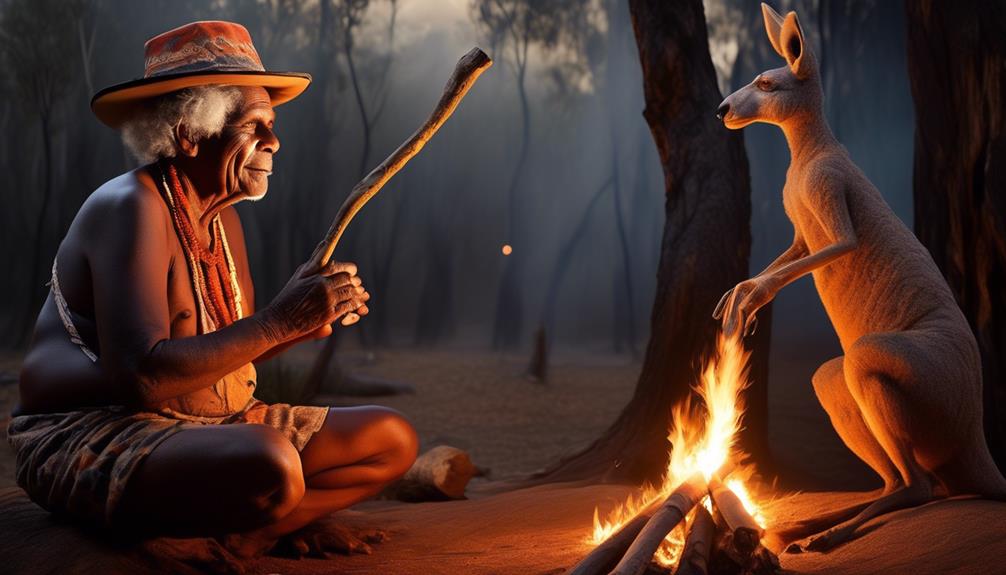We are all familiar with the concept of ‘returning to our roots’, but when it comes to botany, differentiating between native and naturalized species is crucial for the health of our ecosystem. Understanding the nuances between these terms is key for those looking to create a sustainable and thriving garden.
As we explore the differences between native and naturalized plants, we'll uncover the ecological roles they play and the potential impacts they can have on local ecosystems.
Join us as we navigate the complex world of plant cultivation and its implications for our environment.
Key Takeaways
- Native plants have evolved in a specific region and are adapted to local environmental conditions.
- Naturalized plants are non-native species that have established self-sustaining populations in a region.
- Native plants have specialized adaptations to fit into their specific ecological niches.
- Non-native or naturalized plants can disrupt ecological balance and outcompete native species.
Defining Native and Naturalized Plants
Defining native and naturalized plants involves distinguishing between species that have evolved in a particular region and those that have been introduced and established themselves in that area.
Native plants are inherently linked to specific regions, having developed over time within those areas. They've adapted to the local environmental conditions, including climate, soil, and other ecological factors. These plants play a crucial role in maintaining the ecological balance of their native habitats.
On the other hand, naturalized plants are non-native species that have been introduced to a region and have established self-sustaining populations. While they may thrive in their new environment, they don't have the same historical connection and co-evolution with the local ecosystem as native plants.
Characteristics used to define native plants include their historical presence in a region, their role in the local ecosystem, and their relationship with native wildlife. Naturalized plants, however, are often characterized by their ability to spread rapidly and compete with native species.
Understanding the defining characteristics of native and naturalized plants is essential for effective conservation and management of ecosystems.
Ecological Roles and Adaptations

Ecological roles and adaptations of native and naturalized plants are crucial for understanding their impact on local ecosystems and the dynamics of their coexistence. Ecological niches refer to the specific role a species plays in an ecosystem, including its habitat and interactions with other species. Native plants have evolved within their original ecosystems, developing specialized adaptations to fit into their specific ecological niches. On the other hand, naturalized plants, having been introduced to new environments, may face different environmental pressures and thus must adapt to new ecological niches to survive and thrive.
| Ecological Role | Native Plants | Naturalized Plants |
|---|---|---|
| Habitat | Evolved to fit | Adapted to new |
| Interactions | Coevolved with | Adjusted to |
| Adaptations | Specialized | Acquired to |
Understanding the ecological roles and adaptations of both native and naturalized plants is essential for making informed decisions about conservation, restoration, and management of ecosystems. It provides valuable insights into the potential impacts of invasive species and the strategies needed to mitigate these effects. By studying how these plants respond to environmental pressures and occupy ecological niches, we gain a deeper understanding of the intricate web of relationships within ecosystems.
Benefits of Native Plant Gardening
Native plant gardening offers numerous benefits to both the environment and the home gardener. One key benefit is water conservation. Native plants are well-adapted to the local climate and soil conditions, requiring minimal to no irrigation once established. Their deep root systems also help prevent soil erosion and runoff, allowing rainwater to infiltrate the ground and recharge the groundwater. This not only saves water but also reduces the need for supplemental watering, benefiting the environment and potentially lowering water bills for the gardener.
Another significant benefit is the promotion of biodiversity. Native plants provide essential habitats for a variety of wildlife, including birds, insects, and other native species. By cultivating native plants, home gardeners can contribute to the preservation of local ecosystems and the conservation of native species. This, in turn, supports the overall health and balance of the environment.
Additionally, native plant gardens can serve as educational tools, showcasing the beauty and importance of indigenous flora and fauna, and inspiring others to embrace sustainable gardening practices. Therefore, embracing native plant gardening not only conserves water but also plays a crucial role in promoting biodiversity and preserving local ecosystems.
Potential Impacts on Ecosystems

After considering the benefits of native plant gardening, it's imperative to examine the potential impacts on ecosystems resulting from the cultivation and spread of non-native or naturalized plant species. The introduction of invasive species can significantly disrupt ecological balance. These non-native plants may outcompete native species for resources, leading to a decline in biodiversity, as they dominate and alter the natural composition of ecosystems. This disruption can also have a cascading effect on other organisms within the habitat.
- Invasive species: The introduction of non-native plants can lead to the proliferation of invasive species, which may pose a threat to the existing flora and fauna. This can result in a loss of habitat and food sources for native wildlife, potentially leading to population declines.
- Ecological balance: The disturbance caused by naturalized or non-native plants can upset the delicate balance within an ecosystem. This can impact nutrient cycling, water usage, and other essential ecological processes, ultimately affecting the overall health and resilience of the ecosystem.
- Biodiversity, habitat disruption: The spread of non-native plants can result in the displacement of native species, leading to a reduction in biodiversity. Habitat disruption can also occur, affecting the availability of resources for native wildlife and altering the ecological dynamics of the area.
Cultivating a Sustainable Landscape
To establish a sustainable landscape, we prioritize the selection and cultivation of plant species that are well-adapted to the local environment and supportive of ecosystem health. This involves emphasizing water conservation and drought tolerance by choosing plants that require minimal irrigation once established.
By incorporating native and naturalized species with these characteristics, we can reduce water usage and promote long-term landscape sustainability. Additionally, our focus on pollinator attraction and biodiversity support contributes to the overall health of the ecosystem. Selecting plants that provide food and habitat for pollinators, as well as fostering a diverse range of species, helps maintain a balanced and resilient environment.
Our approach involves careful consideration of the interconnections within the ecosystem, ensuring that the landscape not only thrives but also contributes positively to the surrounding natural environment. Through thoughtful plant selection and cultivation practices, we aim to create a sustainable landscape that benefits both the immediate surroundings and the broader ecosystem.
Frequently Asked Questions
How Do Native and Naturalized Plants Differ in Terms of Their Genetic Diversity?
Native plants typically exhibit higher genetic diversity compared to naturalized plants. This variation is crucial for their ability to adapt to environmental changes and resist diseases.
In contrast, naturalized plants often have reduced genetic diversity due to their introduction to new habitats. This limited genetic variation can impact their ecological resilience and ability to thrive in diverse environments.
Understanding these differences is essential for managing and conserving plant populations.
What Are Some Examples of Naturalized Plants That Have Become Invasive and Negatively Impacted Ecosystems?
Invasive species can have severe ecological impact, disrupting biodiversity dynamics. Some naturalized plants, like kudzu and Japanese knotweed, have become invasive, negatively impacting ecosystems. These species often outcompete native plants, altering habitats and threatening native species.
Their genetic adaptation and aggressive spread make them challenging to control. It's crucial to understand the consequences of naturalized plants becoming invasive and develop strategies to mitigate their impact on ecosystems.
Are There Any Specific Native Plants That Are Particularly Beneficial for Attracting Certain Types of Wildlife?
When it comes to beneficial wildlife attraction, native plant gardening offers a diverse array of options. Native plants play a vital role in supporting local ecosystems by providing food and shelter for specific wildlife species. Their adaptation to the local environment also promotes genetic diversity.
This contrasts with invasive species, which can disrupt ecosystems. Understanding the benefits of native plants is crucial for sustainable gardening practices and maintaining a healthy environment.
What Are Some Common Misconceptions About Native Plant Gardening and Its Benefits?
There are several common misconceptions about native plant gardening and its benefits.
Many people mistakenly believe that native gardening is limited in terms of plant diversity and aesthetics. However, native gardening actually promotes genetic diversity and has a positive ecological impact.
Understanding these benefits can help dispel misconceptions and encourage more people to embrace native gardening for its numerous advantages.
How Do Climate Change and Other Environmental Factors Affect the Distribution and Success of Native and Naturalized Plants in Different Regions?
Climate change profoundly impacts the distribution and success of plants, prompting adaptation strategies.
Environmental factors influence the success of naturalized plants, yielding ecological consequences.
These elements shape the complex dynamics of plant distribution and resilience.
Conclusion
In conclusion, native and naturalized plants both play important roles in our ecosystems, offering unique benefits and potential impacts.
While native plants provide essential support for local wildlife and contribute to the overall health of the environment, naturalized plants can also offer aesthetic value and resilience in diverse landscapes.
By cultivating a sustainable landscape that incorporates both native and naturalized plants, we can create a harmonious balance that fosters ecological diversity and stability.
Talise is a talented writer and an expert in her field. Her unique perspective and insights enrich our content with depth and authenticity. With a wealth of knowledge and a strong connection to the subjects she writes about, Talise crafts engaging and informative articles that resonate with our readers. Her dedication to bringing Indigenous culture and wisdom to light is truly commendable.










